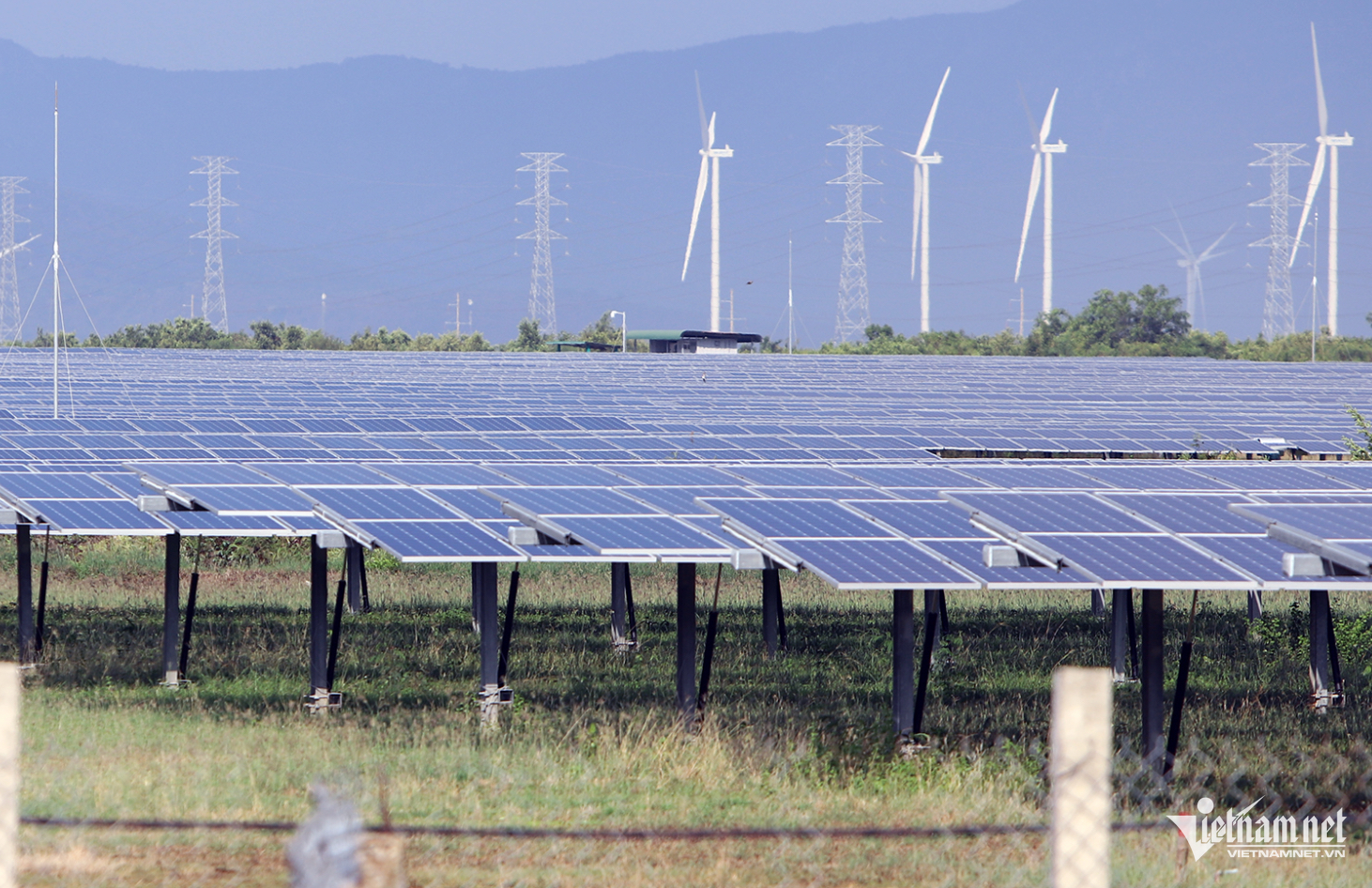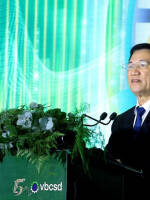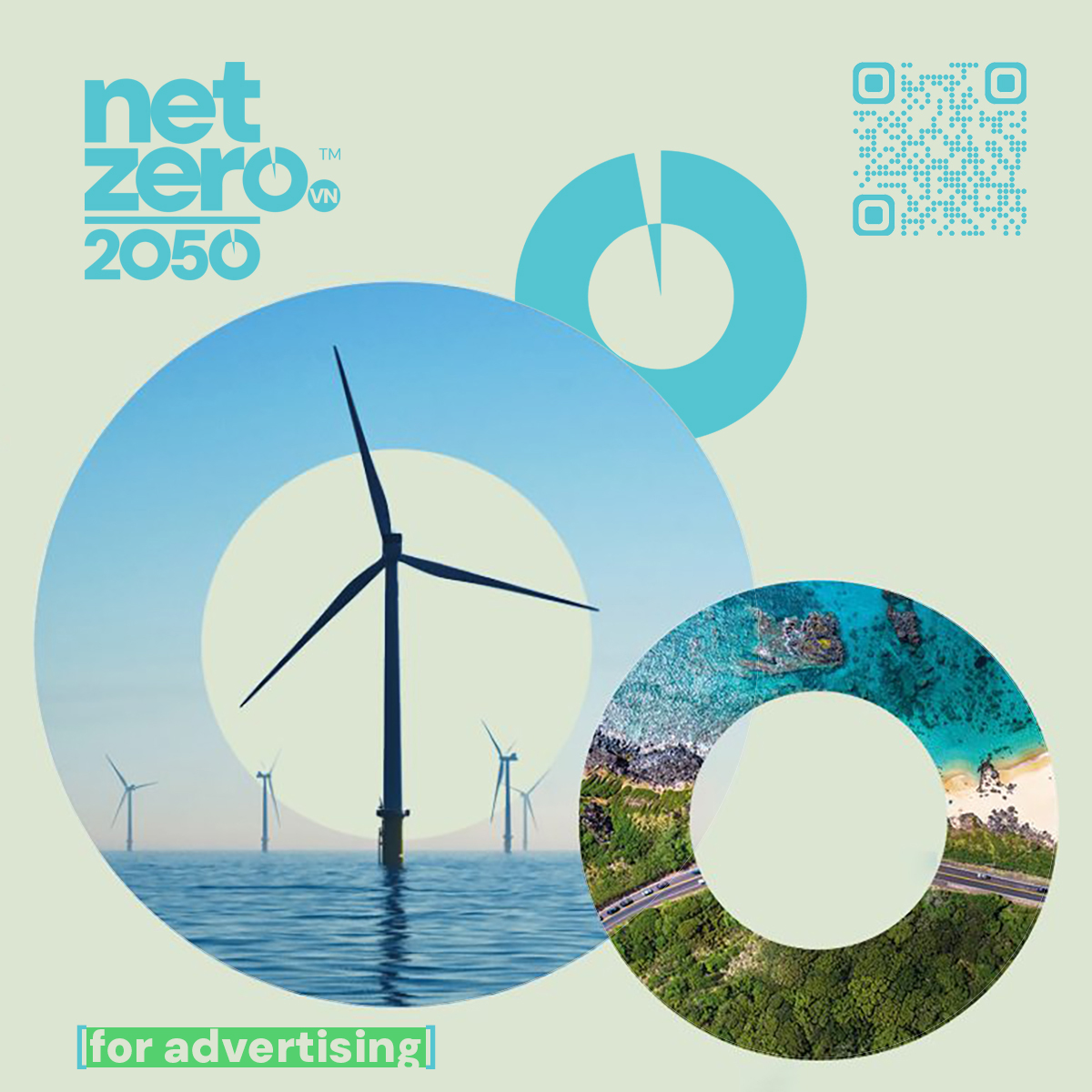
According to the Ministry of Industry and Trade, thermal power plants currently serve as the primary source of electricity in Vietnam, accounting for over 31% of installed capacity and up to 50% of the country’s total electricity generation.
However, this energy source emits significant amounts of CO2, impacting the environment. To meet Vietnam’s international commitments on greenhouse gas reduction, the long-term development of thermal power must be curbed.
CO2 emissions are projected to peak between 2031 and 2035 at 231 million tons, then gradually decrease to around 175 million tons by 2045 – 208 million tons less than projected before COP26. By 2050, CO2 emissions from electricity production are estimated to drop to just 40 million tons per year, contributing significantly to Vietnam’s pledge to achieve net-zero emissions by 2050.
Increasing the share of clean electricity
Vietnam continues to position itself as a proactive and responsible global partner, particularly in the fight against climate change. This commitment was affirmed at the 26th United Nations Climate Change Conference (COP26).
“The commitment to achieving net-zero emissions by 2050 and joining the Global Coal to Clean Power Transition Statement reflects Vietnam’s strategic shift toward a low-carbon, green-growth economy,” said Deputy Minister of Industry and Trade Dang Hoang An.
Rahul Kitchlu, Infrastructure Program Coordinator at the World Bank in Vietnam, noted that the country has successfully transformed from one of the world’s poorest nations into a dynamic emerging economy.
Energy plays a critical role in this transition. However, Vietnam’s rapid economic and energy growth remains heavily reliant on fossil fuels – particularly coal – making it one of the fastest-growing per capita greenhouse gas emitters globally.
To accelerate the energy transition and achieve net-zero emissions, Kitchlu highlighted that Vietnam possesses vast potential for renewable energy. Estimates suggest that an additional 370 GW of renewable capacity could be added by 2040, helping the country reduce its dependence on fossil fuels.
Vietnam is already a renewable energy leader in Southeast Asia, with over 20 GW of installed capacity and approximately USD 17 billion in private investment secured in the past two years alone. These strides reflect a serious commitment to advancing clean energy and decarbonizing the economy.
Still, continued growth in renewables requires improvements in energy system planning, expansion, and regulatory frameworks – particularly for power purchasing – to ensure low-cost, reliable energy supply.
Renewable energy projects are rapidly expanding in Vietnam.
Trade policies and market incentives have helped spur renewable energy development but must be replaced with systematic, transparent, and competitive mechanisms. These changes would enable more efficient private-sector projects with lower costs, helping meet Vietnam’s growing energy needs sustainably.
In parallel with the rapid growth of renewables, there must also be increased investment in grid infrastructure. Additionally, energy efficiency measures are essential, offering cost-effective solutions for the green transition.
Mobilizing resources effectively
According to Hoang Tien Dung, Director General of the Electricity and Renewable Energy Authority under the Ministry of Industry and Trade, on October 8, 2021 – prior to COP26 – the ministry submitted the National Power Development Plan for 2021-2030, with a vision to 2045 (Power Plan VIII) to the Prime Minister for approval. This plan originally projected that thermal power would still account for 36–41% of capacity and 56–66% of electricity output by 2045.
However, following Vietnam’s commitments at COP26, the direction of power development has been fundamentally revised. Compared to the previous version, by 2045, coal-fired power capacity is expected to be reduced by 23,400 MW, and LNG-based capacity by 24,350 MW.
Meanwhile, solar power will increase by 33,000 MW, onshore wind by 23,000 MW, and offshore wind by 28,500 MW. Thanks to the robust development of renewables and fuel switching at thermal plants, CO2 emissions in the post-COP26 scenario are expected to decline significantly.
“Despite numerous challenges in securing electricity supply for socio-economic development and fulfilling international commitments, the trend toward green energy transition is irreversible,” Dung affirmed.
Experts also stress the importance of developing energy storage technologies – such as battery storage, pumped hydro, thermal storage, and smart grids – to stabilize and integrate high shares of renewables into the electricity system.
Additionally, investment should focus on zero-emission technologies like green hydrogen and green ammonia production.
To realize energy transition goals, Deputy Minister of Planning and Investment Nguyen Thi Bich Ngoc emphasized the need for a well-planned roadmap toward a green and sustainable transition that ensures national energy security.
The transition must minimize impacts on vulnerable groups, particularly the poor, who may face rising electricity prices, and workers in fossil fuel sectors who may lose jobs.
During this transition, effective evaluation, supervision, and enforcement mechanisms are necessary to curtail and eventually eliminate polluting facilities and high-carbon infrastructure.
Ngoc further highlighted that financing remains the biggest challenge in achieving net-zero emissions by 2050. Calculations show that Vietnam will need an additional USD 100 billion for climate adaptation and about USD 373 billion to reach net-zero emissions. Therefore, for a successful transition, Vietnam requires genuine financial and technical support from developed countries.
Pham Van Tan, Deputy Director General of the Department of Climate Change under the Ministry of Natural Resources and Environment, stated that the Prime Minister has approved an action plan detailing the tasks and solutions for implementing COP26 commitments.
Funding will come from the state budget as stipulated by law, alongside socialized sources and legally mobilized funds from individuals, organizations, and other entities.
Vietnam will also focus on mobilizing support and cooperation from international organizations, development partners, domestic and international financial institutions, and climate funds.
Private sector investment in low-carbon projects will be encouraged, and efforts will be made to develop a domestic carbon market to increase funding for green development.
Rahul Kitchlu emphasized that although challenges lie ahead, the international community is committed to supporting Vietnam’s energy transition. The World Bank, he confirmed, is ready to assist.
“We are prepared to share global knowledge and experience and help mobilize low-cost climate financing to support Vietnam’s investment and capacity-building efforts. This will enable the country to transition to green energy efficiently while ensuring a stable, affordable power supply for its people,” Kitchlu said.
(Nhan Dan)




